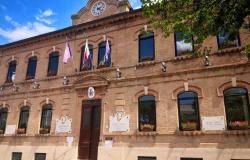Whether for a lunch by the sea or for an aperitif at sunset, summer is the golden season for rosé wines, one of the types on the rise in consumer tastes (growing by 1% in volume and 7% in value in the first quarter of 2024 compared to the same period in 2023, according to Circana data). Today, in the world, 1 bottle of wine in 10 is rosé, a type that has grown constantly in the last 10 years, according to the Observatoire Mondial du Rosé, and of which Italy represents 9% of production and 5% of consumption world championships, dominated by France (with 35% and 34% respectively). And if in the Belpaese rosé wine has a place and date of birth engraved in history (Salice Salentino, land of Leone de Castris, where the first Italian rosé with an American name, the Five Roses, was bottled in 1943), June 28th celebrates International Rosé Day, and Italian wineries, from Trentino to Calabria, boast an increasingly rich offer of pink version wines: from the Trentodoc Extra Brut Rosé of Maso Martis to the Franciacorta Brut Rosé of Lantieri de Paratico, from the Bolgheri Rissoa from Tenuta di Campo di Sasso in Puntabella, the first rosé signed by the Umbrian brand Arnaldo Caprai, from the Calabrian Scassabarile of the Santa Venere winery up to Erse Rosato, produced in Etna by Tenuta di Fessina.
The Extra Brut Rosé by Maso Martisone of the most important brands of Italian sparkling wine, is a real tribute to Pinot Noir: a Classic Method of notable character, structured and profound, crowned Best Rosé in the World in the 2023 “The World’s Best Rosés” ranking by Wine Searcher, the most famous portal for monitoring and comparing wine prices worldwide.
The Brut Rosé Franciacorta signed by Lantieri de Paratico it is a sparkling wine produced with 75% Pinot Noir and 25% Chardonnay. The refermentation takes place in the bottle and the wine remains to mature on the yeasts for a period of 30 months.
In the Rissoa (Cabernet Franc with a small addition of Syrah), signed Campo di Sasso estate, the character of the terroir of Bibbona and the Tuscan coast marries with the Provençal style, giving life to a fascinating alchemy that smells of the sea and summer pine forests. Puntabella (first release year 2023) is the first rosé signed by Arnaldo Caprai, the Umbrian brand that launched Sagrantino onto the international stage: it is produced on the shores of Lake Trasimeno from Sangiovese (60%) and Grenache (40%) grapes, also called Trasimeno Gamay. A rosé with a French interpretation, but with an exquisitely Umbrian character, which takes its name from Puntabella, one of the most evocative panoramic points of Lake Trasimeno.
Scassabarile instead comes from the south, signed by the winery Holy Venusan organic wine made with 100% Marsigliana Nera grapes: its name evokes an ancient connection road between Calabria and Naples, which runs alongside the vineyard where the Marsigliana Nera vines grow, called Serralombardi Scassabarile.
Finally, Erse Rosato, by Fessina estate it is a volcanic wine that comes from the slopes of Etna and is produced with Nerello Mascalese and Nerello Cappuccio grapes, two native Sicilian vines.
Contacts: [email protected]
Follow us also on Twitter: @WineNewsIt
Follow us also on Facebook: @winenewsit
This article is taken from the WineNews archive – All rights reserved – Copyright © 2000/2024




